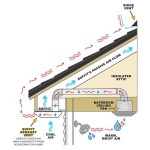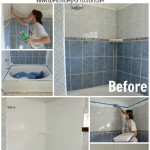What Dissolves Bathroom Silicone: A Comprehensive Guide
Bathroom silicone sealant is a common material used to create waterproof seals around bathtubs, showers, sinks, and toilets. Its flexibility and resistance to water make it an ideal choice for preventing leaks and protecting surfaces from moisture damage. However, silicone sealant can deteriorate over time, becoming unsightly due to mildew growth or requiring replacement due to damage. Removing old or unwanted silicone can be a challenging task, as its inherent properties make it resistant to many common solvents. Understanding what dissolves bathroom silicone effectively is crucial for successful removal and replacement.
The chemical structure of silicone is the key to understanding its resistance and what can break it down. Silicone polymers are based on a silicon-oxygen backbone, rather than the carbon-carbon backbone found in organic polymers. This silicon-oxygen bond is much stronger and more stable than a carbon-carbon bond, contributing to silicone's resistance to high temperatures, chemical attacks, and UV degradation. Furthermore, the presence of methyl groups (CH3) attached to the silicon atoms creates a hydrophobic (water-repellent) surface, explaining its effectiveness as a sealant. This inherent resistance makes the task of finding effective solvents or methods for dissolving silicone challenging.
While complete dissolution of silicone is difficult to achieve with readily available household chemicals, certain substances and techniques can significantly soften, weaken, or degrade the silicone, making it easier to remove mechanically. This article will explore the properties of silicone, the substances that can affect it, and the methods used to effectively remove it from bathroom surfaces. The focus will be on understanding the chemical interactions involved and the practical approaches necessary for successful silicone removal.
Understanding the Limitations of Solvents on Silicone
It is important to acknowledge that truly "dissolving" silicone in the traditional sense of dissolving a sugar cube in water is rarely achievable with common solvents. Many household solvents, such as water, alcohol, and detergents, have virtually no effect on silicone. Other stronger solvents, like acetone or mineral spirits, may slightly soften the surface of the silicone, but they do not penetrate deeply enough to break down the polymer structure effectively. This is because silicone is a cross-linked polymer, meaning that the polymer chains are interconnected, forming a network that makes it difficult for solvent molecules to penetrate and disrupt the structure.
The effectiveness of a solvent on silicone depends on several factors, including the type of silicone (e.g., acetic acid cure vs. neutral cure), the age of the silicone, and the extent of its cross-linking. Older silicone, which has been exposed to environmental factors like UV radiation and temperature fluctuations, may be more brittle and easier to mechanically remove, even though it may not be more susceptible to chemical attack. Similarly, some types of silicone formulations may be more vulnerable to certain solvents than others.
Given these limitations, the primary goal when using solvents for silicone removal is not to dissolve the silicone entirely, but rather to weaken its adhesion to the underlying surface and soften its structure, making mechanical removal more manageable. Therefore, the selection of the appropriate solvent and the application technique are crucial for achieving the desired result.
Chemical Agents and Their Effects on Silicone
While a complete and quick dissolution of silicone with readily available chemicals is improbable, several chemical agents can weaken or degrade the silicone, facilitating its removal. These agents work by either disrupting the silicone polymer structure or by attacking the adhesive bond between the silicone and the underlying surface. The effectiveness of these agents can vary depending on the specific formulation of the silicone sealant and the conditions under which it was applied.
One class of agents that can affect silicone is strong alkalis, such as sodium hydroxide (lye). These substances can, under certain conditions, break down the silicon-oxygen bonds in the silicone polymer, leading to its degradation. However, the process is typically slow and requires high concentrations and elevated temperatures, making it impractical and potentially dangerous for bathroom applications. Moreover, strong alkalis can damage many common bathroom surfaces, such as tile and grout, so their use requires extreme caution and meticulous protection of surrounding areas.
Another approach involves using solvents specifically formulated for silicone removal. These solvents typically contain a blend of chemicals designed to penetrate the silicone and weaken its adhesion. Some of these solvents may contain chlorinated hydrocarbons, which can effectively soften the silicone, but their use is often restricted due to environmental concerns and potential health hazards. Other, more environmentally friendly options are available, but their effectiveness may be less pronounced. It is crucial to follow the manufacturer's instructions carefully when using these solvents, ensuring adequate ventilation and protective gear.
Furthermore, some specialized cleaning products designed for removing mold and mildew contain chemicals that can also degrade silicone. These products often contain strong oxidizing agents, such as bleach (sodium hypochlorite), which can attack the silicone polymer and weaken its structure. However, prolonged exposure to bleach can also discolor or damage certain bathroom surfaces, so it is essential to test the product on an inconspicuous area before widespread application.
It is important to note that none of these chemical agents will completely dissolve the silicone in a short amount of time. They primarily serve to soften the silicone and weaken its adhesion, making mechanical removal easier. Therefore, the use of chemical agents should always be accompanied by mechanical methods, such as scraping or cutting.
Mechanical Methods and Tools for Silicone Removal
Given the limitations of chemical solvents in completely dissolving silicone, mechanical removal methods are essential for effectively removing old or unwanted sealant. These methods involve physically separating the silicone from the underlying surface, often in conjunction with the use of solvents to soften the silicone and weaken its adhesion.
One of the most common tools for mechanical removal is a sharp blade, such as a utility knife or a specialized silicone removal tool. These tools are designed to cut through the silicone, separating it from the surface. When using a blade, it is important to exercise caution to avoid damaging the underlying surface. Holding the blade at a shallow angle and using a sawing motion can help to prevent gouging or scratching. For intricate areas, such as corners or edges, a smaller, more precise blade may be necessary.
Another useful tool is a scraper, which can be used to pry the silicone away from the surface. Scrapers come in various shapes and sizes, with some specifically designed for silicone removal. A plastic scraper is often preferred over a metal scraper, as it is less likely to damage the underlying surface. When using a scraper, it is important to apply steady pressure and work the tool along the edge of the silicone, gradually separating it from the surface.
In some cases, it may be necessary to use a combination of cutting and scraping to remove the silicone effectively. For example, a blade can be used to make initial cuts along the edges of the silicone, and then a scraper can be used to pry the silicone away from the surface. The application of heat, such as from a heat gun or a hair dryer, can also help to soften the silicone and make it easier to remove. However, it is important to use caution when applying heat, as excessive heat can damage certain surfaces or release harmful fumes.
After the bulk of the silicone has been removed, there may be residual adhesive remaining on the surface. This can be removed using a solvent specifically designed for adhesive removal. These solvents typically contain chemicals that break down the adhesive bond, allowing it to be wiped away. It is important to follow the manufacturer's instructions carefully when using these solvents, ensuring adequate ventilation and protective gear.
Finally, it is crucial to thoroughly clean the surface after removing the silicone and any residual adhesive. This can be done using a mild detergent and water. The surface should be completely dry before applying new silicone sealant. This ensures proper adhesion of the new sealant and prevents moisture from being trapped underneath.
In summary, while truly dissolving bathroom silicone is often impractical, a combination of chemical agents to weaken the silicone and mechanical methods to physically remove it is the most effective approach. Choosing the right tools and techniques, along with careful attention to safety precautions, is essential for a successful silicone removal project.
How To Remove Silicone Sealant From Tile Glass Metal And Wood
How To Remove Silicone From A Shower Diy 2024 Guide
How To Remove Silicone Your Guide Wd 40
How To Remove Silicone Sealant From Tile Glass Metal And Wood
How To Remove And Replace Silicone Sealant

How To Remove Bathroom Sealant Sanctuary Bathrooms
How To Re Silicone A Mouldy Shower

How To Dissolve Hardened Silicone Ehow

How To Remove Bath Sealant

What Can Be Used To Dissolve Silicone Caulking Hunker
Related Posts







